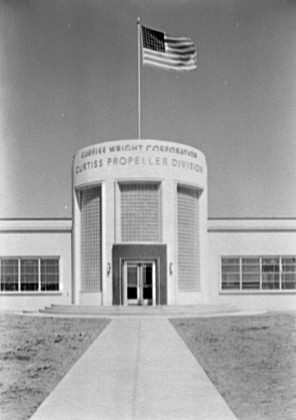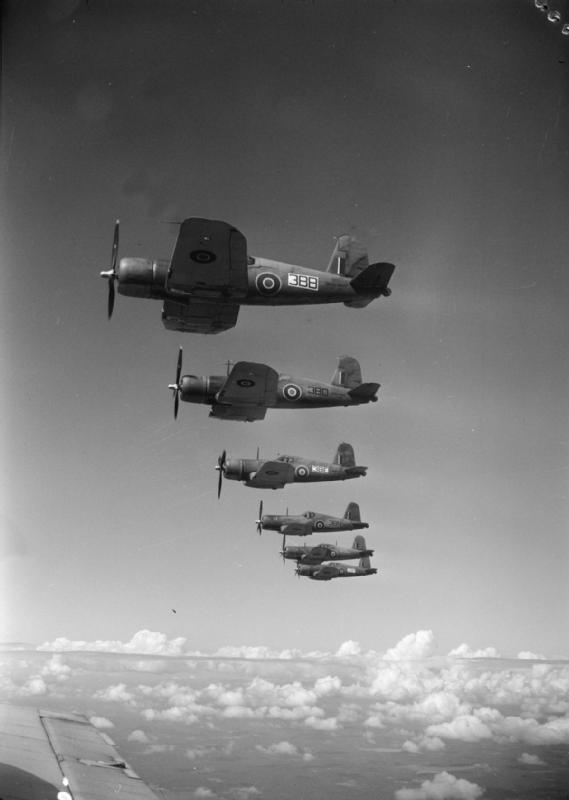|
Vought V-141
The Vought V-141 (which was later redesignated V-143 after modification) was a prototype American single-seat fighter aircraft of the 1930s. It was a development of the unsuccessful Northrop 3-A design, but was itself a failure, being rejected by the United States Army Air Corps. The sole prototype was sold to the Japanese Army in 1937, but no production followed, with the type proving to be inferior to existing Japanese fighters. Design and development In 1935, Northrop had flown the Northrop 3A, a single-engined, single-seat monoplane with a fixed undercarriage, to meet a United States Army Air Corps (USAAC) requirement for a single-seat fighter. This was a development of Northrop's XFT prototype carrier fighter, and shared the XFT's instability and tendency to enter spins. The sole Northrop 3A prototype disappeared during a test flight over the Pacific on 30 July 1935, and Northrop decided to abandon further development of the 3A.Angelucci and Bowers 1987, p. 361. The Air ... [...More Info...] [...Related Items...] OR: [Wikipedia] [Google] [Baidu] |
WikiProject Aircraft
A WikiProject, or Wikiproject, is an affinity group for contributors with shared goals within the Wikimedia movement. WikiProjects are prevalent within the largest wiki, Wikipedia, and exist to varying degrees within Wikimedia project, sibling projects such as Wiktionary, Wikiquote, Wikidata, and Wikisource. They also exist in different languages, and translation of articles is a form of their collaboration. During the COVID-19 pandemic, CBS News noted the role of Wikipedia's WikiProject Medicine in maintaining the accuracy of articles related to the disease. Another WikiProject that has drawn attention is WikiProject Women Scientists, which was profiled by ''Smithsonian Magazine, Smithsonian'' for its efforts to improve coverage of women scientists which the profile noted had "helped increase the number of female scientists on Wikipedia from around 1,600 to over 5,000". On Wikipedia Some Wikipedia WikiProjects are substantial enough to engage in cooperative activities with outsi ... [...More Info...] [...Related Items...] OR: [Wikipedia] [Google] [Baidu] |
Curtiss-Wright
The Curtiss-Wright Corporation is an American manufacturer and services provider headquartered in Davidson, North Carolina, with factories and operations in and outside the United States. Created in 1929 from the consolidation (business), consolidation of Curtiss Aeroplane and Motor Company, Curtiss, Wright Aeronautical, Wright, and various supplier companies, the company was immediately the country's largest aviation firm and built more than 142,000 aircraft engines for the U.S. military during World War II. It no longer makes aircraft but still makes many related components, particularly actuators, Aircraft flight control system, aircraft controls, valves, and it provides surface-treatment services. It supplies equipment to the Aerospace manufacturer, commercial, Manufacturing, industrial, defense industry, defense, and energy markets. It makes parts for nuclear power, commercial and nuclear navy, naval nuclear power systems, industrial vehicles, and petroleum industry, oil- and ... [...More Info...] [...Related Items...] OR: [Wikipedia] [Google] [Baidu] |
Aircraft First Flown In 1936
An aircraft ( aircraft) is a vehicle that is able to fly by gaining support from the air. It counters the force of gravity by using either static lift or the dynamic lift of an airfoil, or, in a few cases, direct downward thrust from its engines. Common examples of aircraft include airplanes, rotorcraft (including helicopters), airships (including blimps), gliders, paramotors, and hot air balloons. Part 1 (Definitions and Abbreviations) of Subchapter A of Chapter I of Title 14 of the U. S. Code of Federal Regulations states that aircraft "means a device that is used or intended to be used for flight in the air." The human activity that surrounds aircraft is called ''aviation''. The science of aviation, including designing and building aircraft, is called ''aeronautics.'' Crewed aircraft are flown by an onboard pilot, whereas unmanned aerial vehicles may be remotely controlled or self-controlled by onboard computers. Aircraft may be classified by different criteria, such as ... [...More Info...] [...Related Items...] OR: [Wikipedia] [Google] [Baidu] |
Low-wing Aircraft
A monoplane is a fixed-wing aircraft configuration with a single mainplane, in contrast to a biplane or other types of multiplane (aeronautics), multiplanes, which have multiple wings. A monoplane has inherently the highest efficiency and lowest drag of any wing configuration and is the simplest to build. However, during the early years of flight, these advantages were offset by its greater weight and lower manoeuvrability, making it relatively rare until the 1930s. Since then, the monoplane has been the most common form for a fixed-wing aircraft. Characteristics Support and weight The inherent efficiency of the monoplane is best achieved in the cantilever wing, which carries all structural forces internally. However, to fly at practical speeds the wing must be made thin, which requires a heavy structure to make it strong and stiff enough. External Bracing (aeronautics), bracing can be used to improve structural efficiency, reducing weight and cost. For a wing of a given size, ... [...More Info...] [...Related Items...] OR: [Wikipedia] [Google] [Baidu] |
Vought Aircraft
Vought was the name of several related American aerospace firms. These have included, in the past, Lewis and Vought Corporation, Chance Vought, Vought-Sikorsky, LTV Aerospace (part of Ling-Temco-Vought), Vought Aircraft Companies, and Vought Aircraft Industries. The first incarnation of Vought was established by Chance M. Vought and Birdseye Lewis in 1917. In 1928, it was acquired by United Aircraft and Transport Corporation, which a few years later became United Aircraft Corporation; this was the first of many reorganizations and buyouts. During the 1920s and 1930s, Vought Aircraft and Chance Vought specialized in carrier-based aircraft for the United States Navy, by far its biggest customer. Chance Vought produced thousands of planes during World War II, including the F4U Corsair. Vought became independent again in 1954, and was purchased by Ling-Temco-Vought (LTV) in 1961. The company designed and produced a variety of planes and missiles throughout the Cold War. Vought ... [...More Info...] [...Related Items...] OR: [Wikipedia] [Google] [Baidu] |
1930s United States Fighter Aircraft
Year 193 ( CXCIII) was a common year starting on Monday of the Julian calendar. At the time, it was known as the Year of the Consulship of Sosius and Ericius (or, less frequently, year 946 ''Ab urbe condita''). The denomination 193 for this year has been used since the early medieval period, when the Anno Domini calendar era became the prevalent method in Europe for naming years. Events By place Roman Empire * January 1 – Year of the Five Emperors: The Roman Senate chooses Publius Helvius Pertinax, against his will, to succeed the late Commodus as Emperor. Pertinax is forced to reorganize the handling of finances, which were wrecked under Commodus, to reestablish discipline in the Roman army, and to suspend the food programs established by Trajan, provoking the ire of the Praetorian Guard. * March 28 – Pertinax is assassinated by members of the Praetorian Guard, who storm the imperial palace. The Empire is auctioned off; Marcus Didius Julianus the highest ... [...More Info...] [...Related Items...] OR: [Wikipedia] [Google] [Baidu] |
Air International
''AIR International'' is a British aviation magazine covering current defence aerospace and civil aviation topics. It has been in publication since 1971 and is currently published by Key Publishing Ltd. History and profile The magazine was first published in June 1971 with the name ''Air Enthusiast''. In January 1974 its title was changed to ''Air Enthusiast International'' and finally to ''Air International'' in July 1974. ''Air International'' is published by Key Publishing Limited. The magazine has its headquarters in Stamford, Lincolnshire. Sister publications include ''Air Forces Monthly'', ''Airliner World'', '' Airports International'', ''FlyPast ''FlyPast'' is an aircraft magazine, published monthly, edited by Tom Allett, Steve Beebee and Jamie Ewan. History and profile The magazine started as a bi-monthly edition in May/June 1981 and its first editor was the late Mike Twite. It is ow ...,'' and '' Today's Pilot'' (no longer published by Key Publishing). Refere ... [...More Info...] [...Related Items...] OR: [Wikipedia] [Google] [Baidu] |
Air Enthusiast
''Air Enthusiast'' was a British, bi-monthly, aviation magazine, published by the Key Publishing group. Initially begun in 1974 as ''Air Enthusiast Quarterly'', the magazine was conceived as a historical adjunct to ''Air International'' magazine. ''Air International'' was (and remains) involved with current aviation topics and the ''Quarterly'' concerned itself with historical matters. Each issue contained 80 pages; as a result certain articles were divided and each part appeared over a number of issues. ''Air Enthusiast'' was illustrated with colour and black-and-white photos, diagrams, profiles and three-view drawings. Earlier issues featured cutaway drawings, but these were dropped. The articles provided detail for varieties of aircraft and events. The magazine was published by three publishing companies and changed editors once, with William Green and Gordon Swanborough as joint editors for 16 years and Ken Ellis as the sole editor for the final 16 years. The magazine ... [...More Info...] [...Related Items...] OR: [Wikipedia] [Google] [Baidu] |
Peter M
Peter may refer to: People * List of people named Peter, a list of people and fictional characters with the given name * Peter (given name) ** Saint Peter (died 60s), apostle of Jesus, leader of the early Christian Church * Peter (surname), a surname (including a list of people with the name) Culture * Peter (actor) (born 1952), stage name Shinnosuke Ikehata, a Japanese dancer and actor * ''Peter'' (1934 film), a film directed by Henry Koster * ''Peter'' (2021 film), a Marathi language film * "Peter" (''Fringe'' episode), an episode of the television series ''Fringe'' * ''Peter'' (novel), a 1908 book by Francis Hopkinson Smith * "Peter" (short story), an 1892 short story by Willa Cather * ''Peter'' (album), a 1972 album by Peter Yarrow * ''Peter'', a 1993 EP by Canadian band Eric's Trip * "Peter", 2024 song by Taylor Swift from '' The Tortured Poets Department: The Anthology'' Animals * Peter (Lord's cat), cat at Lord's Cricket Ground in London * Peter (chief mouser), ... [...More Info...] [...Related Items...] OR: [Wikipedia] [Google] [Baidu] |
Japanese Military Aircraft Designation Systems
The Japanese military aircraft designation systems for the Imperial period (pre-1945) had multiple designation systems for each armed service. This led to the Allies' use of code names during World War II, and these code names are still better known in English-language texts than the real Japanese names for the aircraft. A number of different schemes were simultaneously in use. Imperial Japanese Navy Air Service The used several different aircraft designation systems simultaneously. Between 1931 and 1945, aircraft had ''Shi'' numbers designating the specification they were designed to. They also had a long form of Type and Model Number system used between 1920 and 1943, a short designation system akin to that of the United States Navy in use between the late 1920s and 1945, a system of popular names introduced to replace type numbers from 1943 through 1945. Specification ''Shi'' numbers Japanese Navy specifications from 1931 were given an experimental, or ''Shi'' (試) number ... [...More Info...] [...Related Items...] OR: [Wikipedia] [Google] [Baidu] |
Vought SB2U Vindicator
The Vought SB2U Vindicator is an American carrier-based dive bomber developed for the United States Navy in the 1930s, the first monoplane in this role. Vindicators still remained in service at the time of the Battle of Midway, but by 1943, all had been withdrawn to training units. It was known as the Chesapeake in Royal Navy service. Design and development In 1934, the United States Navy issued a requirement for a new Scout Bomber for carrier use, and received proposals from six manufacturers. The specification was issued in two parts, one for a monoplane, and one for a biplane. Vought submitted designs in both categories, which would become the XSB2U-1 and XSB3U-1 respectively. The biplane was considered alongside the monoplane design as a "hedge" against the U.S. Navy's reluctance to pursue the modern configuration. The XSB2U-1 was of conventional low-wing monoplane configuration with a retractable conventional tailwheel landing gear, the pilot and tail gunner being seated ... [...More Info...] [...Related Items...] OR: [Wikipedia] [Google] [Baidu] |





